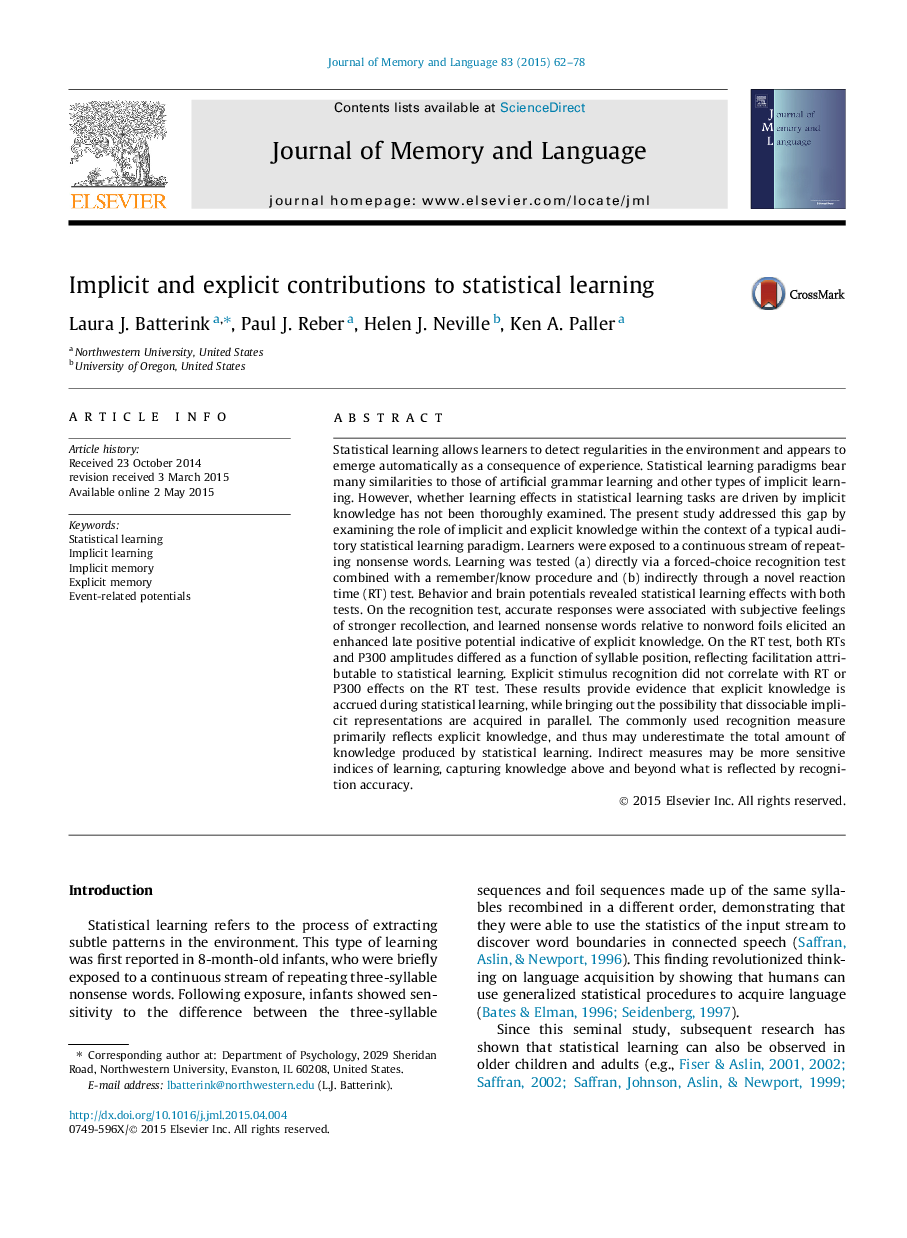| Article ID | Journal | Published Year | Pages | File Type |
|---|---|---|---|---|
| 931787 | Journal of Memory and Language | 2015 | 17 Pages |
•Statistical learning was measured through recognition and RT tasks.•Successful recognition associated with stronger recollection and an enhanced LPC.•Statistical learning reduced RTs and P300 amplitude to predictable stimuli.•Recognition and RT effects did not significantly correlate.•Indirect RT-based measures can be sensitive indices of statistical learning.
Statistical learning allows learners to detect regularities in the environment and appears to emerge automatically as a consequence of experience. Statistical learning paradigms bear many similarities to those of artificial grammar learning and other types of implicit learning. However, whether learning effects in statistical learning tasks are driven by implicit knowledge has not been thoroughly examined. The present study addressed this gap by examining the role of implicit and explicit knowledge within the context of a typical auditory statistical learning paradigm. Learners were exposed to a continuous stream of repeating nonsense words. Learning was tested (a) directly via a forced-choice recognition test combined with a remember/know procedure and (b) indirectly through a novel reaction time (RT) test. Behavior and brain potentials revealed statistical learning effects with both tests. On the recognition test, accurate responses were associated with subjective feelings of stronger recollection, and learned nonsense words relative to nonword foils elicited an enhanced late positive potential indicative of explicit knowledge. On the RT test, both RTs and P300 amplitudes differed as a function of syllable position, reflecting facilitation attributable to statistical learning. Explicit stimulus recognition did not correlate with RT or P300 effects on the RT test. These results provide evidence that explicit knowledge is accrued during statistical learning, while bringing out the possibility that dissociable implicit representations are acquired in parallel. The commonly used recognition measure primarily reflects explicit knowledge, and thus may underestimate the total amount of knowledge produced by statistical learning. Indirect measures may be more sensitive indices of learning, capturing knowledge above and beyond what is reflected by recognition accuracy.
